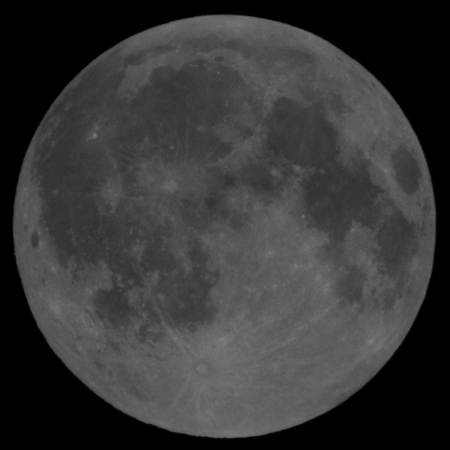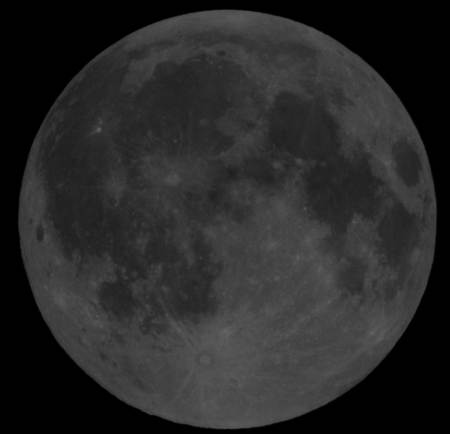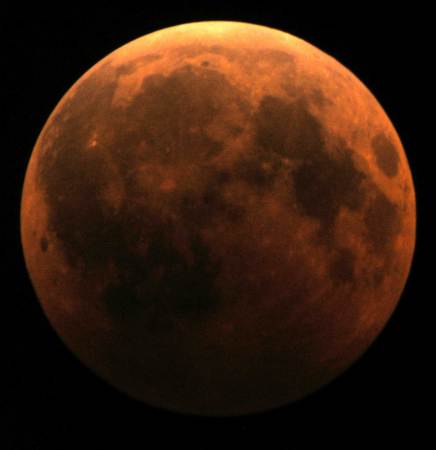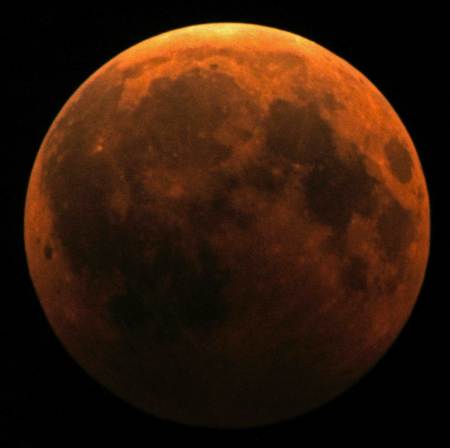A rare celestial event occurred early this morning, so I thought I’d try my hand at capturing some images. I spent about an hour making sure my telescope mount was as close to polar aligned as I could make it. I balanced the heavy scope on the tube and aligned the spotting scope, the one through which I would be taking the images, with the main scope, so the computerized alignment would proceed smoothly. I took a few practice shots of the full moon about 5 hours before the event would occur:
For some reason I wasn’t able to control exposure as well as I’d hoped; both my “best” practice shots are a bit underexposed, process them as I might:
But I assumed it wouldn’t really matter, since I was probably going to sleep through the first lunar eclipse to occur on the solstice in 456 years, anyway. It had been a long day, and I have a lot of work to do on Tuesday, since it’s my last day in the office before Christmas. And I got a nice shot of the full moon during the September equinox earlier this year, so I’ve had some good luck already with shooting the moon while it’s been in sync with the seasons. Still and all, a lunar eclipse is a pretty exciting event to witness, so it would be nice to have a personal record of it…
Imagine my pleased surprise, then, when my eyes popped open at 3 a.m., and I was able to get dressed and get outside in time to see the first lunar eclipse on the solstice in 456 years. Without all the prep work, there would have been no chance to capture any images at all. As it is, I got two barely usable shots:
The colors in the image are about as close as I can come to the real thing; I didn’t add any color in postprocessing.
They were both 8-second exposures at f/5.3, shot through a 60-mm spotting scope of 360-mm focal length with a 10-mm eyepiece, yielding 36x magnification.





